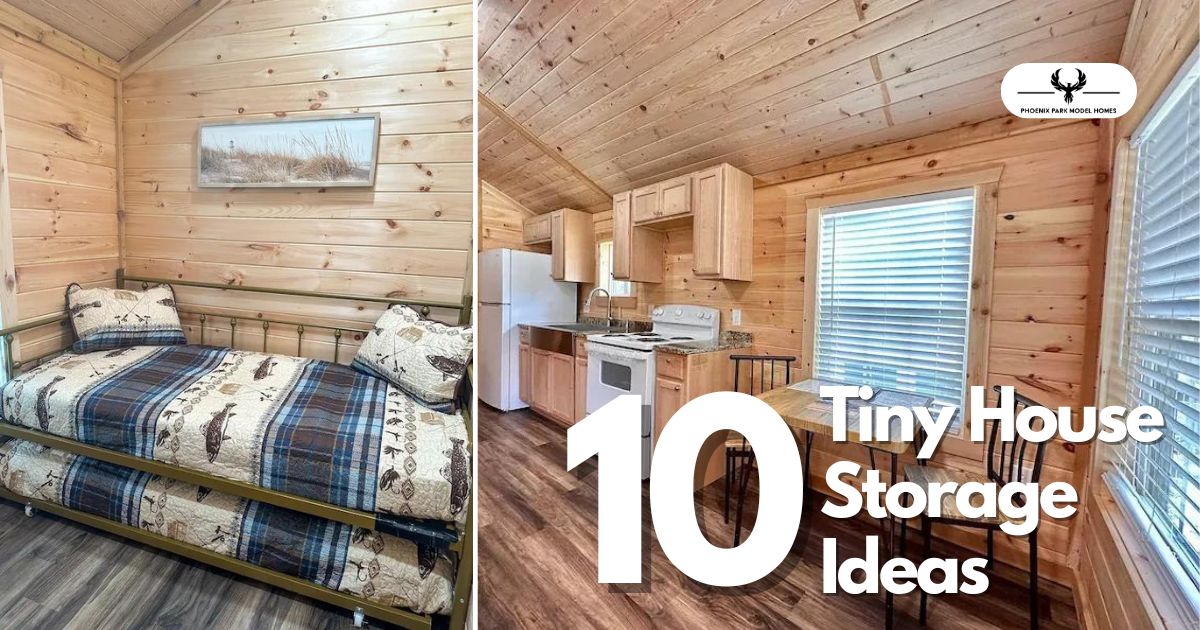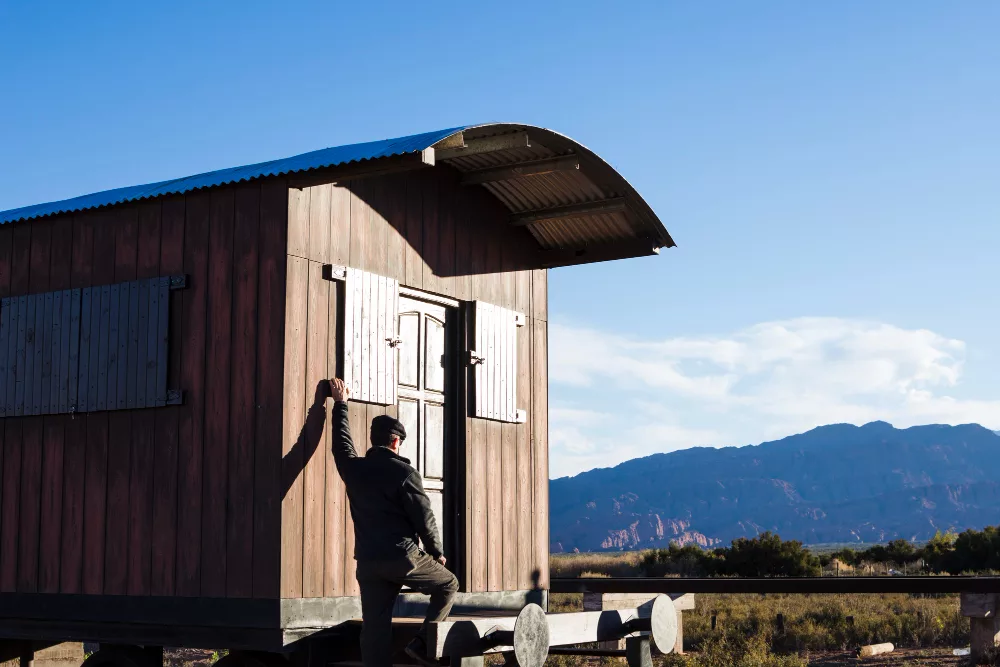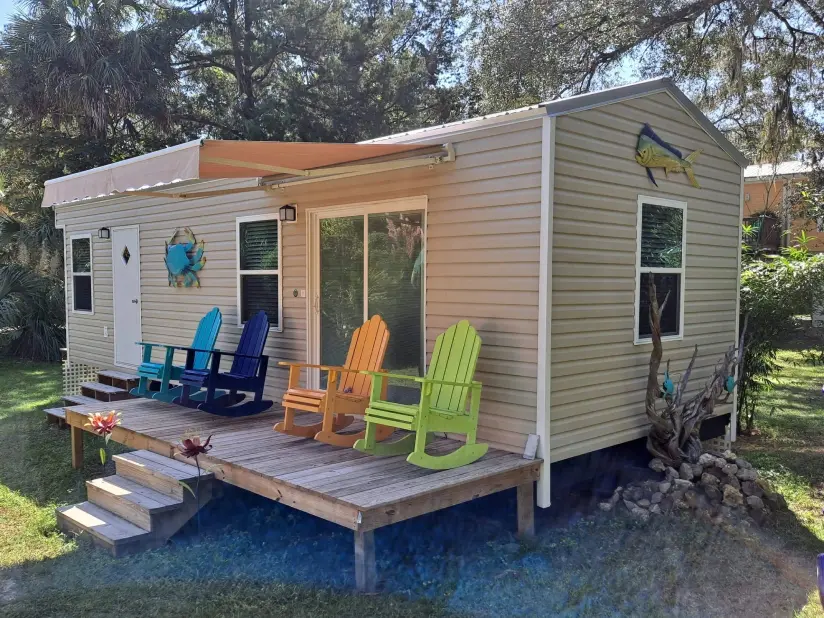In the United States, the tiny home market has gained popularity in recent years, with an estimated compound annual growth rate of 4.88% from 2022 to 2027. With this rising popularity, there are more than 10,000 tiny homes in the country, and the number is increasing.
You may ask why there is so much growth in such a short period. There are numerous reasons, including its minimalistic nature, less carbon footprint, eco-friendliness, cost-effectiveness, and more.
In today’s world, sustainability is no longer a hype but a necessity. An eco-friendly tiny house with an added minimalistic nature offers a more sustainable future. As the popularity of tiny homes continues to rise, so does the demand for innovative eco-friendly upgrades to make these compact spaces even more environmentally friendly.
Eco-friendly tiny houses are not only beneficial for the environment but also for your overall well-being. There are innumerable ways to transform your tiny house into a sustainable abode, from energy-efficient solutions to clever space-saving innovations.
In this blog, let’s explore how to achieve the most efficient tiny house using eco-friendly upgrades.
7 Eco-friendly Upgrades For Sustainable Tiny Homes
1. Solar Panels
The Federal government provides subsidies to taxpayers of up to 30% on solar panel installation. Install solar panels on your tiny home’s roof to harness the sun’s power and generate clean, renewable energy. This can significantly reduce or even eliminate your reliance on traditional grid electricity, making your tiny home more sustainable and cost-effective in the long run.

Image Source: HCB Solar
2. Rainwater Harvesting System
Implement a rainwater harvesting system to collect and store rainwater for various household uses such as watering plants, flushing toilets, and bathing. This reduces your dependence on municipal water sources and conserves precious resources.

Image Source: Living Tiny and Green
3. Energy-Efficient Appliances
Opt for energy-efficient appliances and fixtures, such as LED lighting that uses 90% less energy than regular light bulbs, ENERGY STAR-rated refrigerators, and low-flow faucets and showerheads. These upgrades minimize energy and water consumption without sacrificing functionality, making them ideal for tiny living spaces.
4. Compact Composting System
Set up a compact composting system to manage organic waste generated in your tiny home. This can include a small compost bin or vermicomposting setup to convert food scraps and other organic materials into nutrient-rich compost for gardening or landscaping purposes.
5. Off-Grid Water Filtration System
Install a water filtration system that purifies water from natural sources such as rivers, lakes, or wells, enabling off-grid living without relying on bottled water or municipal supplies. This ensures access to clean, potable water while minimizing plastic waste and environmental impact.

Image Source: Tiny House Talk
6. Passive Heating and Cooling Design
Incorporate passive heating and cooling design principles into your tiny home, such as strategic orientation, ample insulation, thermal mass, and natural ventilation. These features optimize indoor comfort levels while reducing the need for mechanical heating and cooling systems, enhancing energy efficiency.
7. Sustainable Materials and Finishes
Use eco-friendly and non-toxic building materials and finishes throughout your tiny home, such as reclaimed wood, bamboo flooring, VOC-free paints, and recycled glass countertops. These materials minimize environmental impact and create a healthier indoor living environment for occupants.
Benefits Of Eco-friendly Tiny Homes
Sustainable tiny homes offer innumerable benefits for the environment and their inhabitants. Here are some key advantages:
- Reduced Environmental Impact: Tiny homes have a significantly smaller footprint than traditional houses, requiring fewer materials and resources for construction. Sustainable building practices further minimize environmental impact by incorporating eco-friendly materials, energy-efficient systems, and renewable energy sources, helping to mitigate climate change and preserve natural resources.
- Lower Energy Consumption: With their smaller size and efficient design, tiny homes require less energy for heating, cooling, and lighting. Incorporating energy-efficient appliances, passive heating and cooling techniques, and renewable energy systems such as solar panels can reduce energy consumption, lower utility bills, and decrease reliance on fossil fuels.
- Minimalist Lifestyle: Living in a tiny home encourages a minimalist lifestyle, promoting conscious consumption and reducing waste. With limited space available, occupants are compelled to prioritize essentials and eliminate excess possessions, leading to a simpler, more sustainable way of life focusing on experiences and relationships rather than material possessions.
- Financial Freedom: Tiny homes are often more affordable to build, purchase, and maintain compared to traditional houses, making homeownership more accessible to a broader range of individuals and families. Lower utility bills, reduced property taxes, and the ability to live mortgage-free or with minimal debt can provide financial freedom and flexibility, allowing occupants to pursue their passions, travel, or save for the future.
- Resilience and Self-Sufficiency: Tiny homes promote resilience and self-sufficiency by encouraging homeowners to live more independently and resourcefully. Off-grid capabilities, such as rainwater harvesting, composting toilets, and renewable energy systems, provide resilience against disruptions to traditional utilities. In contrast, gardening, food preservation, and DIY repairs empower occupants to live more self-sufficiently.
Conclusion
By incorporating these eco-friendly upgrades into your tiny home, you can create a space that maximizes sustainability and enhances comfort, functionality, and overall quality of life, enjoying the benefits of eco-friendly tiny homes.











